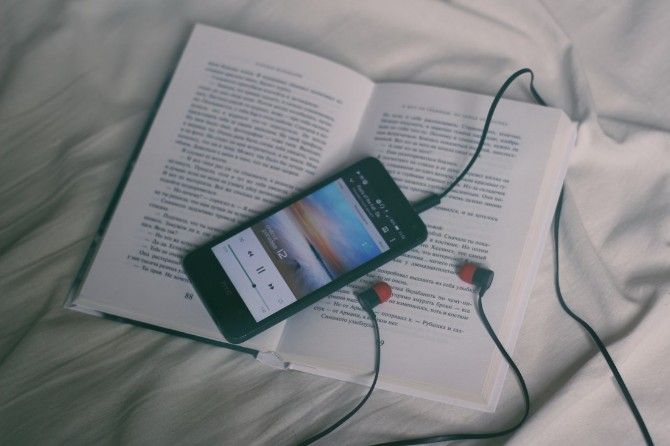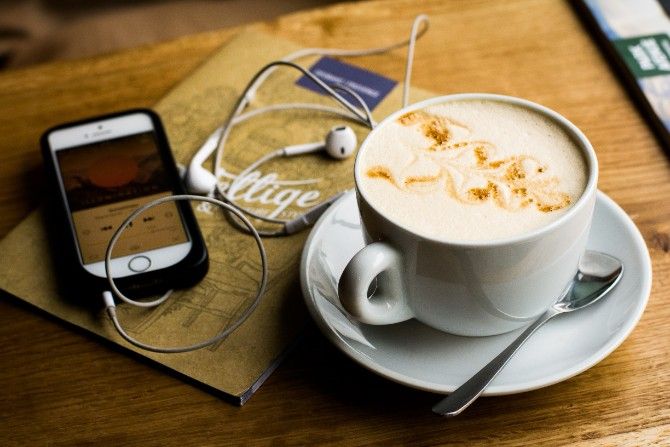Do you have trouble staying focused? If the problem isn't social media, it might be distracting noise.
We're going to show you various colors of noise that can help you improve your focus and productivity, plus a few tools you can use to create these supportive noises.
What Is "Noise"?
Our ears detect sounds when a change in pressure moves our eardrums. The sound also must fall within a certain frequency range. A tone has only one frequency or several related ones. In contrast, noise features hundreds or thousands of random frequencies in it.
White noise may already be familiar: the best-known color of sound. It's a combination of all sound frequencies, which gives it a masking effect.
There are other colors of noise too. First, we'll explore some of them in depth. Then, you'll learn ways to depend on noise colors to get more done.
What Is Pink Noise?
In addition to containing all frequencies, white noise distributes them equally. Pink noise is similar, except its lowest frequencies are most prominent. In a grade school music class, you might have learned about octaves. They represent groups of eight notes.
The highest and lowest notes of an octave sound similar to the ears. That's because they're in the same pitch class. Also, the highest note of an octave group is twice the frequency of the lowest note.
Why do octaves relate to pink noise? The power per hertz decreases as the frequency increases. However, pink noise has equal energy per octave. As a result, most people perceive it as sounding even.
It's also commonly heard in nature when waves crash, leaves rustle, or rain falls. Sound engineers use it to test how audio equipment responds to frequencies, too.
What Is Brown Noise?
Compared to pink noise, brown noise shows an even more significant power reduction as frequency rises. That means the low notes have the most energy. Some people also refer to it as red noise because red lights have a low frequency too.
It might surprise you to learn that brown noise didn't get its name from its color. Instead, it comes from a botanist named Robert Brown.
In 1827, Brown discovered particles moving randomly by looking at pollen in a puddle under a microscope. He noticed the pieces of pollen contained even smaller particles within them. Furthermore, they moved in a seemingly randomized way. Today, scientists refer to that movement as Brownian motion.
That scientific revelation connects with brown noise because its sound signal changes randomly from one moment to the next. Going back to octaves, brown noise has an energy reduction of six decibels per octave.
A Brief Look at Other Noise Colors
Blue noise is similar to pink noise and brown noise because its power changes with frequency. However, as frequency goes up, so does the sound's energy, which essentially makes blue noise the opposite of brown noise.
Then, there's purple noise. Think of it as the inverse of brown noise regarding octaves. With every octave, the respective power goes up by six decibels.
Gray noise exists, as well. It has most of its power at the high and low ends of the frequency spectrum. However, there is very little energy in the section associated with human hearing. That means when people detect it, every frequency seems equally loud.
Plus, there's green noise, which is at the midpoint of the white noise spectrum.
Finally, black noise is silence, typically used for noise cancellation.
You may become aware of other noise colors too, such as yellow and orange. However, we've just covered the most common types.
Choose the Right Noise to Boost Productivity
Why do noise colors matter? Many people listen to particular kinds of music while doing tasks. As it turns out, choosing certain colors of noise could boost productivity.
In an Open Office or Co-Working Space: Pink Noise
The human brain picks up on auditory changes and determines whether it's worth processing the new information. So, you may lose focus when your office partner's phone rings or someone laughs across the room.
However, the use of sound-masking equipment reduces that effect. When it emits a steady noise, your brain doesn't notice other sounds in the environment as much.
Earlier, you learned that white noise contains all frequencies, making those sounds best for concentration. However, every time it goes up by an octave, the amount of new, high-energy sounds doubles. Human ears are more sensitive to higher frequencies than lower ones. In fact, they amplify high-energy input. As a result, some people get uncomfortable while listening to white noise in an office.
Try listening to pink noise when in a loud workspace such as an open-plan office. It also works well in a shared workspace you rent by the hour or day. Pink noise balances out the pitches and spreads the frequencies more evenly, unlike white noise. Use it to boost concentration, and appreciate how it's pleasant to hear.
When You Write: Pink Noise
Maybe your job requires a significant amount of writing things down with a consistent level of accuracy. In that case, consider playing pink noise as you write. Researchers found it reduces distractions caused by people talking and cuts down on pauses during writing.
When You Study: White Noise
Trying to buckle down and complete a continuing education course or a similar requirement? White noise may become your study partner, but the evidence contradicts itself.
Researchers from University College in London viewed functional MRI scans of young adults listening to white noise. They found that doing so caused slight improvements in image recognition.
In an investigation elsewhere, a person excelled at information-recall tasks when playing sounds, either music or white noise. That effect was in comparison to learning and remembering in silence. The auditory input was present while initially learning the information and recalling it. However, there's a possibility the outcome occurred because of environmental consistency rather than the noise itself.
Interestingly, the University College study found that white noise impaired recall abilities. It's important to note, though, that those subjects heard the stimuli through headphones. Since those audio accessories already helped block distracting noise, maybe the white noise wasn't necessary.
Scientists have also found a positive connection between using white noise with children who have attention deficit problems. However, the noise made attentiveness worse in those characterized by normal attention spans. Remember, white noise drowns out sounds. The theory is that it likely reduces concentration disruptions in people most sensitive to them. However, it causes distractions for others.
To Ease Hearing Disorders: Brown Noise
Perhaps there's a diagnosed hearing disorder limiting your productivity. Then, brown noise could make its effects less noticeable. Hearing specialists often recommend patients listen to it after receiving diagnoses of hyperacusis or tinnitus.
The first disorder causes hypersensitivity to everyday sounds. The deep, rumbling nature of brown noise could make the associated frequencies less disturbing.
Also, people suffering from tinnitus experience problematic ringing in their ears. Some individuals report that hearing brown noise consistently makes them not notice the ringing as much.
Listening to brown noise is not a substitute for getting professional advice about a suspected hearing disorder. However, you might use it along with other treatment methods to reduce symptoms.
To Fall Asleep: Pink Noise
Failing to improve your sleep patterns could compromise the effectiveness of all your productivity plans.
However, a study from Northwestern University indicated listening to pink noise could enhance slumber. This research focused on older adults exposed to pink noise. It made subjects sleep deeper and perform an average of three times better on memory tests.
Scientists gave the tests the night before hearing the stimulation. They then repeated them the next morning to gauge the change. Earlier studies investigated the effect of noise stimulation on other age groups and made similar conclusions.
How to Add Noise Colors to Your Day
By now, you're probably curious about the effects noise colors might have on your work output. Finding out is as easy as playing YouTube videos for productivity. Many users make long videos of particular types of noise for people to hear.
However, there are several purposeful apps, too. For example, you might try Noisli.
It offers pink, brown, and white noise, along with specific soothing nature sounds. There's also a timer function that works well for promoting extra-productive time blocks.
Download: Noisli for iOS | Android ($1.99)
Then, there's Simply Noise. It reportedly offers purer representations of the noises mentioned above compared to some other apps. The app also has a sleep timer that automatically closes the interface after a specified time. That feature could avoid draining your phone's battery as you snooze.
Download: Simply Noise for iOS (Free with premium sounds)
How Do You Use Noise Colors to Focus?
Before reading this content, you might have automatically thought noise is universally distracting. However, now you know it helps some people become more productive. After giving it a try, you might find it's a welcome addition to your day.
Did any of the noise colors above surprise you? Give them a try and tell us how you use them in the comments section below!







